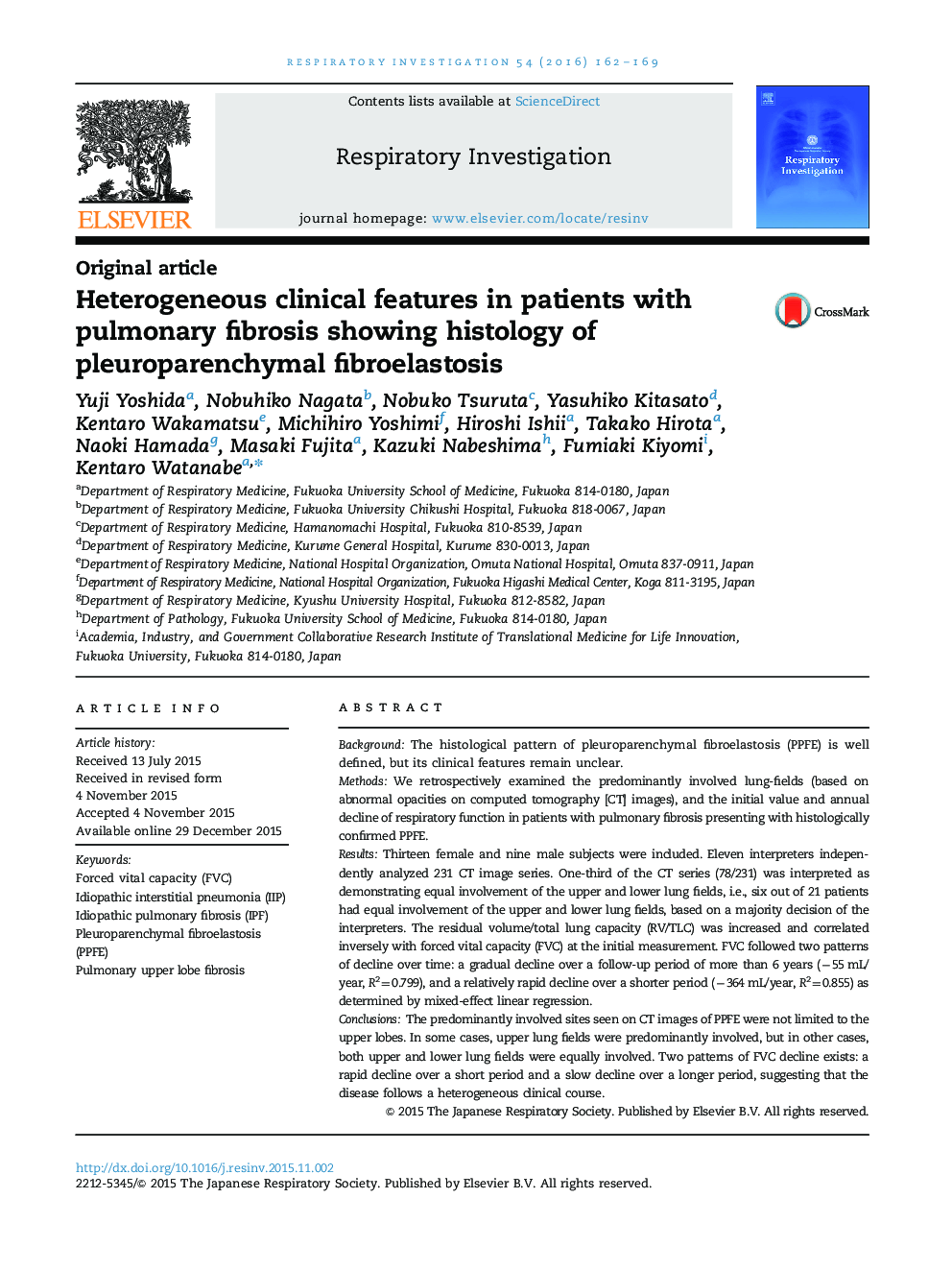| Article ID | Journal | Published Year | Pages | File Type |
|---|---|---|---|---|
| 3418564 | Respiratory Investigation | 2016 | 8 Pages |
BackgroundThe histological pattern of pleuroparenchymal fibroelastosis (PPFE) is well defined, but its clinical features remain unclear.MethodsWe retrospectively examined the predominantly involved lung-fields (based on abnormal opacities on computed tomography [CT] images), and the initial value and annual decline of respiratory function in patients with pulmonary fibrosis presenting with histologically confirmed PPFE.ResultsThirteen female and nine male subjects were included. Eleven interpreters independently analyzed 231 CT image series. One-third of the CT series (78/231) was interpreted as demonstrating equal involvement of the upper and lower lung fields, i.e., six out of 21 patients had equal involvement of the upper and lower lung fields, based on a majority decision of the interpreters. The residual volume/total lung capacity (RV/TLC) was increased and correlated inversely with forced vital capacity (FVC) at the initial measurement. FVC followed two patterns of decline over time: a gradual decline over a follow-up period of more than 6 years (−55 mL/year, R2=0.799), and a relatively rapid decline over a shorter period (−364 mL/year, R2=0.855) as determined by mixed-effect linear regression.ConclusionsThe predominantly involved sites seen on CT images of PPFE were not limited to the upper lobes. In some cases, upper lung fields were predominantly involved, but in other cases, both upper and lower lung fields were equally involved. Two patterns of FVC decline exists: a rapid decline over a short period and a slow decline over a longer period, suggesting that the disease follows a heterogeneous clinical course.
